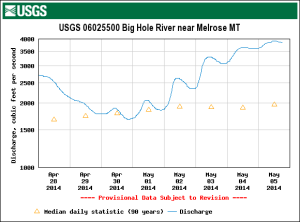To get a better understanding of recreation on the Big Hole River, I contacted Joe Willauer of Twin Bridges Montana and asked him a a few questions. Joe is an avid sportsman, a board member of the Big Hole Watershed Committee, a fishing guide and a passionate conservationist. Getting his perspective on the subject was great, and he gave some insightful responses about the controversy on the Big Hole River. Check out some of the interview below, and click on the link to visit Joe’s Evolution Anglers blog!
Q: Have river closures on the Big Hole effected your guiding services in the past?
A: In the six years that I have guided the Big Hole river closures have only impacted my operation one time, summer of 2013. Fortunately we have so many other options around Twin Bridges we just went to other rivers and had more water and healthier fishing conditions.
Q: How do your feelings towards river closures differ as a business owner and a conservationist?
A: We have a lot of tailwater options near Twin Bridges (Beaverhead, Madison, Missouri) so it doesn’t impact us much from a business standpoint. Protecting the fishery for the future is what matters, and if that means we don’t fish the Big Hole in August, so be it.
Q: How do you feel, in regards to the possible listing of the Arctic Grayling, the future of watershed management in the Big Hole will be different?
A: From an angling standpoint I would hope that it wouldn’t impact much given the low impact catch and release fishing has on fish populations. It will certainly change how consumptive uses of water in the Big Hole are managed though.







